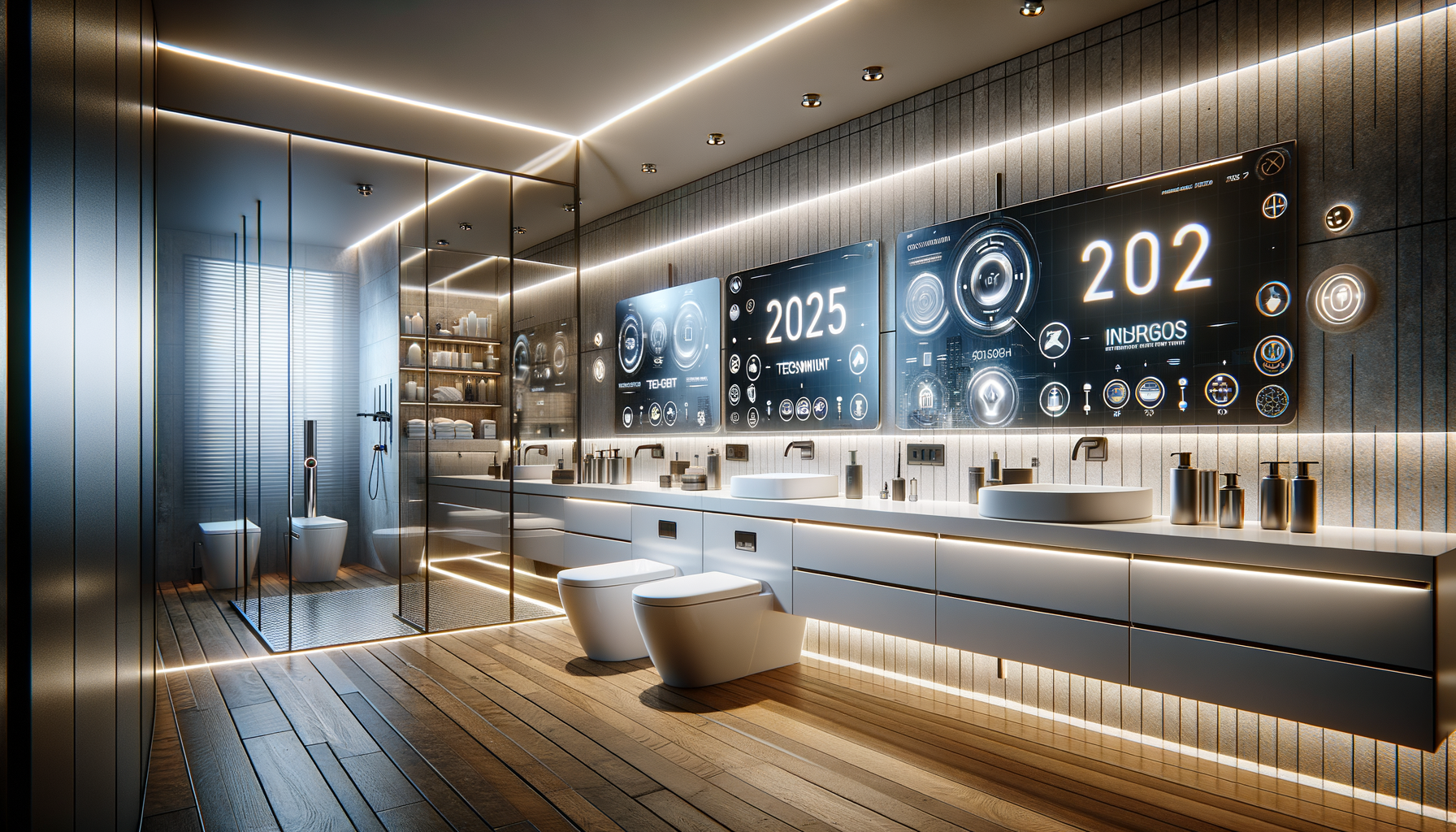Revolutionizing Bathroom Spaces: Top Trends of 2025
Explore the top bathroom trends for 2025, where aesthetics meets innovation. Learn how these trend-setting designs can transform your space into a sanctuary of style.

Introduction to Modern Bathroom Innovations
The bathroom is no longer a mere utility space in our homes; it has evolved into a sanctuary for relaxation and rejuvenation. As we step into 2025, bathroom designs are experiencing a transformative shift, merging aesthetics with cutting-edge technology. This new wave of design prioritizes both functionality and visual appeal, making the bathroom a pivotal part of home improvement projects. The integration of smart technology, sustainable materials, and innovative layouts is setting the stage for a new era in bathroom design.
Smart Technology Integration
In 2025, smart technology is playing a crucial role in bathroom design. The integration of IoT devices has made it possible to create a personalized and efficient bathroom experience. Smart mirrors, for instance, are equipped with touchless controls, allowing users to adjust lighting, check the weather, and even receive news updates while getting ready for the day. Similarly, smart showers can be programmed to the user’s preferred temperature and water pressure, ensuring a consistent and comfortable experience every time.
Moreover, voice-activated features are becoming increasingly popular, enabling hands-free operation of various bathroom fixtures. This not only enhances convenience but also contributes to a more hygienic environment. The use of sensors in toilets and faucets also promotes water conservation, aligning with the growing emphasis on sustainability.
Key advancements include:
- Smart mirrors with integrated displays
- Voice-activated lighting and temperature controls
- Automated water-saving features
These innovations are not only about luxury but also focus on enhancing the overall efficiency of bathroom spaces.
Sustainable and Eco-Friendly Materials
As environmental consciousness continues to rise, the use of sustainable materials in bathroom design is a trend that is gaining momentum. In 2025, homeowners are increasingly opting for eco-friendly options that reduce their carbon footprint while maintaining a stylish appearance. Recycled materials, such as reclaimed wood and recycled glass, are being utilized to create unique and attractive bathroom fixtures and finishes.
Additionally, the use of water-efficient fixtures, such as low-flow toilets and faucets, is becoming standard practice. These fixtures not only conserve water but also reduce utility bills, making them a practical choice for eco-conscious homeowners.
Another noteworthy trend is the use of natural materials like bamboo and stone, which bring a touch of nature into the bathroom while being sustainable. These materials are known for their durability and aesthetic appeal, making them a popular choice for modern bathroom designs.
- Recycled and reclaimed materials
- Water-efficient fixtures
- Natural materials like bamboo and stone
These choices reflect a growing trend towards sustainability without compromising on style or functionality.
Innovative Layouts and Space Utilization
With urban living spaces becoming more compact, innovative bathroom layouts are essential for maximizing space without sacrificing comfort. In 2025, designers are focusing on creating versatile layouts that make the most of limited square footage. This includes the use of floating vanities and wall-mounted toilets that free up floor space, giving the illusion of a larger area.
Open shelving and built-in storage solutions are also trending, providing easy access to bathroom essentials while maintaining a clutter-free environment. These designs not only enhance functionality but also contribute to a minimalist aesthetic that is highly sought after in contemporary homes.
Furthermore, the concept of the wet room—a fully waterproofed bathroom space without barriers between the shower and the rest of the area—is gaining popularity. This design not only maximizes space but also offers a sleek and modern look.
- Floating vanities and wall-mounted fixtures
- Open shelving and built-in storage
- Wet room concepts
These innovative layouts are redefining how we perceive and utilize bathroom spaces.
Conclusion: The Future of Bathroom Design
The advancements in bathroom design for 2025 showcase a harmonious blend of aesthetics and innovation. As technology continues to evolve, so will our living spaces, with bathrooms becoming more than just a place of necessity. The focus on smart technology, sustainable materials, and innovative layouts highlights a shift towards creating spaces that are both functional and visually appealing.
For homeowners and designers alike, these trends offer exciting opportunities to transform bathrooms into personal sanctuaries that reflect individual style and values. As we embrace these changes, the bathroom will continue to be a central element in home design, offering comfort, efficiency, and sustainability.